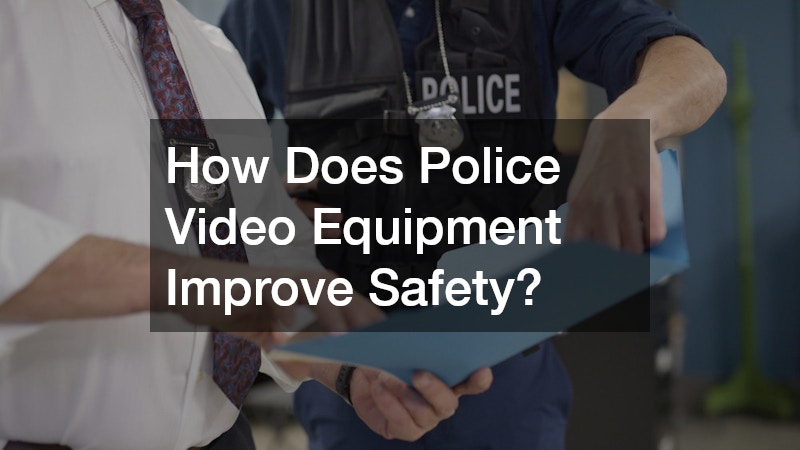
Police video equipment has become an integral part of modern law enforcement. Not only does this technology help in maintaining transparency, but it also plays a crucial role in enhancing the safety of both officers and the public. Over the years, police departments worldwide have increasingly adopted these tools, recognizing their potential to positively impact community relations and operational effectiveness.
Video Source
With advancements in technology, police video equipment has evolved significantly. Today's body-worn cameras and dashboard cameras are more compact, efficient, and capable of recording high-definition video. These improvements have made it possible for officers to capture detailed footage during interactions with the public, providing a clear record of events as they unfold.
One of the most significant ways police video equipment enhances safety is through increased accountability and transparency. When officers wear body cameras, there is a clear, unbiased record of their interactions, which helps in establishing the truth during investigations. This visibility helps to build trust between law enforcement and the community, reducing tensions and potential conflicts.
Transparency is crucial in maintaining a good relationship between police and community members. Video recordings provide valuable evidence that can exonerate innocent officers and hold accountable those who engage in misconduct. By knowing they are being recorded, officers may be more likely to adhere to protocol and treat individuals with respect, thus minimizing the likelihood of confrontational incidents.
Moreover, the presence of video cameras can deter potential misconduct by civilians. When people are aware that their actions are being recorded, they might think twice before engaging in illegal activities. As a result, police video equipment not only protects officers but also enhances public safety by discouraging unlawful behavior.
Police video equipment plays a crucial role in crime reduction and evidence collection. The reality that interactions are being filmed can deter crime, both in immediate situations and pressing individuals to reconsider before committing unlawful acts. When potential offenders know they might be caught on camera, they may hesitate, thereby reducing the incidence of crime.
Video evidence is vital in legal proceedings, providing clear and unbiased accounts of incidents. This digital proof can significantly strengthen a case and lead to higher conviction rates. By having evidence of higher quality and reliability, prosecutions are more likely to result in fair outcomes, enhancing the justice system's efficiency.
Furthermore, police departments can use video footage to analyze crime patterns and develop more effective strategies. This proactive use of evidence allows for smarter resource allocation and focused efforts on high-risk areas. Overall, the strategic use of police video equipment in evidence collection directly contributes to safer communities by facilitating more effective law enforcement practices.
Another important aspect of police video equipment is its use in training and improving officer behavior. Videos from previous encounters can be invaluable for training purposes, providing real-life scenarios for analysis and discussion. Officers can learn from both positive and negative examples, helping to refine their skills and decision-making processes.
In addition to enhancing training, video recordings also allow for real-time critique and feedback. Supervisors can review footage to assess officer performance, identifying areas for improvement. This regular monitoring not only enhances the skills of individual officers but also improves the overall efficacy of the police force.
Moreover, when officers are aware that their actions are being recorded and reviewed, they are more likely to adhere to best practices. The potential for feedback and evaluation encourages them to maintain high standards of conduct. As a result, police video equipment not only aids in training but also fosters a culture of continuous professional development and accountability.
In conclusion, police video equipment has a profound impact on the safety of both law enforcement officers and the public. Through enhanced accountability, deterrent effects on crime, and improved training, these technologies are reshaping the landscape of policing. The benefits extend beyond immediate safety, fostering trust, transparency, and efficiency within communities.
As technology continues to advance, the capabilities of police video equipment will only expand, further enhancing its role in public safety. Continuous evaluation and updates to policies related to the use of such equipment will ensure that its implementation remains beneficial and ethically sound. As police departments around the world adopt these technologies, the accumulated benefits will be realized in the form of safer, more harmonious societies.
.